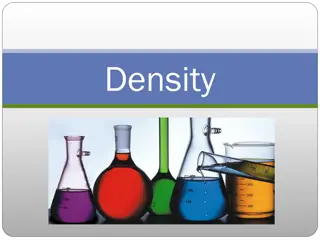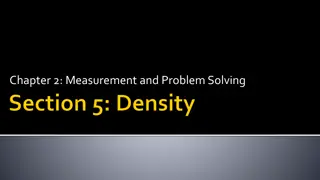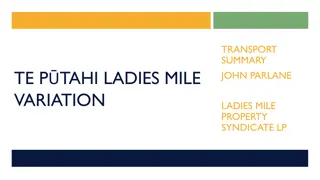Studying Tree Density and Species Diversity
Explore methods for measuring tree density and species diversity in a study site, including using measuring tapes, recording distances, and calculating average values. Learn how to evaluate species diversity using the Simpson's Diversity Index. Images and data record sheets aid in understanding the concepts.
Download Presentation

Please find below an Image/Link to download the presentation.
The content on the website is provided AS IS for your information and personal use only. It may not be sold, licensed, or shared on other websites without obtaining consent from the author.If you encounter any issues during the download, it is possible that the publisher has removed the file from their server.
You are allowed to download the files provided on this website for personal or commercial use, subject to the condition that they are used lawfully. All files are the property of their respective owners.
The content on the website is provided AS IS for your information and personal use only. It may not be sold, licensed, or shared on other websites without obtaining consent from the author.
E N D
Presentation Transcript
Contents A. Tree density B. Species diversity C. Growth conditions of trees
A. Tree density Instruments: measuring tapes ( 3), ribbons Steps: Use two measuring tapes to define the study site (50m 50m in the figure below). Contents Contents
A. Tree density Find out the nearest neighbour of every tree in the site, use a measuring tape to measure the distance between them and record it on a data record sheet. Tie ribbons on the trees as marks after measurements. Sum up all distances and calculate the average value. Then, we get 11.56m, the average nearest neighbour distance of trees in the figure. The longer the average nearest neighbour distance, the lower the tree density, and vice versa. Contents Contents
A. Tree density Data record sheet of the nearest neighbour of trees (sample) Tree Nearest neighbour Distance (m) 1 3 17.5 2 3 10 3 4 7.5 4 3 7.5 5 8 17.5 6 7 7.5 7 6 7.5 8 5 17.5 Sum 92.5 Average value ( d d) 11.56 Contents Contents
B. Species diversity Instrument: measuring tape Steps: Use the measuring tape to set a transect of 20m long. Identify the trees and shrub species along the transect. Count the number of each species and record them on a data record sheet. Data record sheet of the number of trees and shrubs (sample) Number (n) Species A 2 Tree Species B 3 Species C 2 Species D 4 Shrub Species E 5 Species F 7 Contents Contents
B. Species diversity Using the formula below, calculate the Simpson s Diversity Index (D) to evaluate the species diversity along the transect. n(n 1) 1 , D = N(N 1) where n = number of each plant species, N = total number of all plant species The value of the Simpson s Diversity Index lies between 0 and 1. The larger the value, the higher the species diversity, and vice versa. Contents Contents
B. Species diversity Number (n) n(n-1) Species A 2 2 Tree Species B 3 6 Species C 2 2 Species D 4 12 Shrub Species E 5 20 Species F 7 42 Total number of all plant species (N) 23 Contents Contents
B. Species diversity 2 + 6 + 2 + 12 + 20 + 42 1 D = 23(23 1) 84 = 1 506 = 1 0.2 = 0.8 The Simpson s Diversity Index is 0.8, which means that the species diversity of the study site is high. Contents Contents
C. Growth conditions of trees i. Tree height For short plants (e.g. shrubs): Use a meter ruler to measure For taller plants (e.g. trees): Use an abney level to measure Instruments: abney level, measuring tape Contents Contents
C. Growth conditions of trees i. Tree height Steps: The surveyor should stand in front of a tree and keep a suitable distance (note that the surveyor and the tree should be on the same level) as shown in the figure below. Contents An illustration of measuring tree height Contents
C. Growth conditions of trees i. Tree height Use the measuring tape to measure the distance between the surveyor and the tree (d), and the height of eye level of the surveyor (H1). Contents An illustration of measuring tree height Contents
C. Growth conditions of trees i. Tree height The surveyor uses the abney level to point at the top of the tree, then find out the angle of elevation ( ). Contents An illustration of measuring tree height Contents
C. Growth conditions of trees i. Tree height Calculate the tree height using the formula below. Tree height = H1+ H2, where H2= d tan Contents An illustration of measuring tree height Contents
C. Growth conditions of trees ii. Tree girth Instruments: abney level, measuring tape Steps: At 4.5 feet (about 1.37m) above the ground, use the measuring tape to surround the tree stem, then measure the tree girth. Contents Contents























